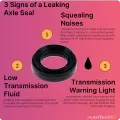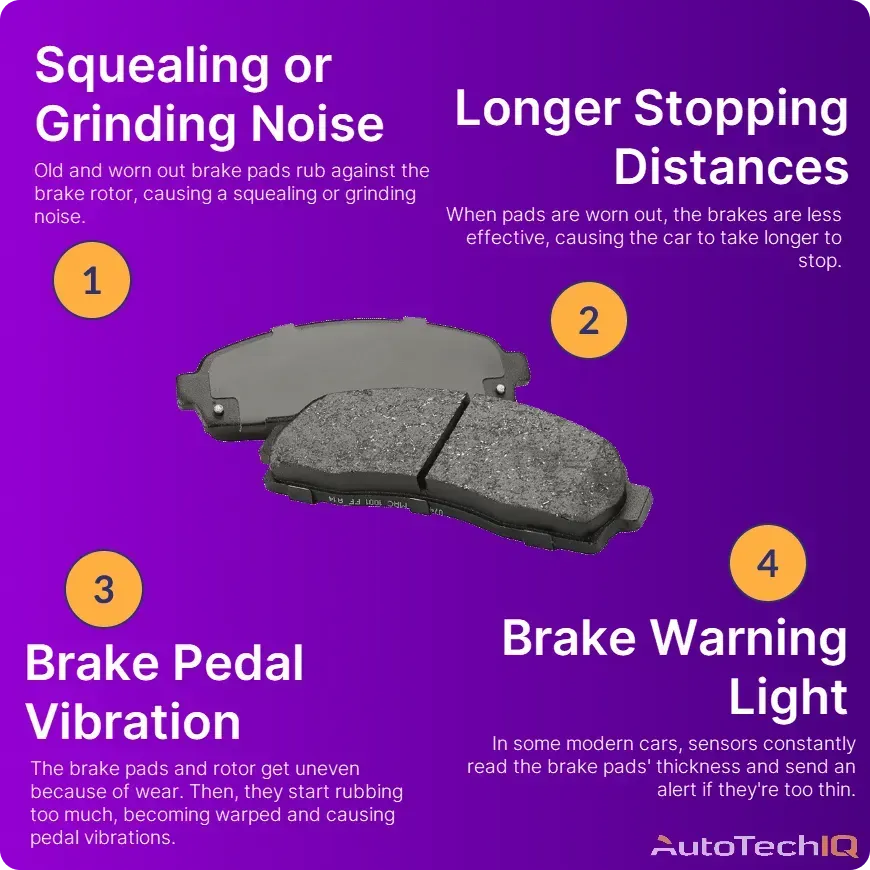
What are Brake pads?
Brake pads are crucial elements in a vehicle's braking system; they use friction-resistant material and sit on a metal backing plate. When you press the brake pedal, the hydraulic fluid pushes the brake calipers, squeezing the pads against the brake rotors. This squeeze generates friction, slowing the wheel's rotation until it stops safely.
However, this heavy and constant friction makes brake pads wear out. Consequently, the pads require periodic replacements to maintain effective braking.
How long does the general brake system last?
The lifespan of brake systems varies based on driving habits, environment, and brake component quality. In addition, the brake system has different parts with distinct lifespans.
Brake pads: On average, brake pads can last between 30,000 and 70,000 miles. Of course, regular inspections ensure they function safely over time.
Brake rotors: Brake rotors last longer than brake pads and can last between 50,000 and 70,000 miles.
Brake fluid: You must change the brake fluid every 2 to 3 years to maintain the system healthy and free of contamination.
Brake calipers: Brake calipers and lines are highly durable and usually last for decades if they're corrosion-free and getting regular inspections.
Brake master cylinder: The brake master cylinder is also durable and can last for decades. However, it's essential to ensure its efficiency by doing proper brake fluid changes.

How many miles until replacing the brake pads?
Brake pad longevity depends on several factors, including driving conditions and brake pad type. On average, they last between 30,000 to 70,000 miles. However, city driving with frequent and rough stops wears them faster than highway driving.
Regular checks and inspections are the best way to have the pads last longer. Typically, brake pads emit squealing or high-pitched noise, indicating it's time to change them.
Do front brake pads wear faster?
Front brakes often wear faster than rear brakes. This is because the front brakes bear more of the braking force. Imagine that the car's weight goes mainly to the front wheels during a stop. In most vehicles, the front brakes can be responsible for up to 70% of the stopping power, leading to quicker wear.
How much should a complete brake system job cost?
The cost of a full brake job can vary based on region, vehicle type, and the specific components replaced. Additionally, it's essential to prioritize a comprehensive brake system evaluation by a trusted and certified shop, where the pricing becomes proper and fair. This approach ensures the system is restored to its intended operation.
When working with a trusted shop, the focus should be on quality and safety rather than seeking multiple quotes. The ideal shop should present your vehicle's inspection results with repair recommendations. Then, they should disclose which parts need immediate fixes and which don't.
How many years do brake pads last?
While mileage is a more common measurement, brake pads, on average, last about 3 to 5 years, depending on driving habits and conditions. For instance, the average value applies to regular city driving, not heavy-duty work.
Other brake components like rotors and calipers might last longer, up to 10 years. However, it's essential to have regular inspections to determine their condition; do not trust this time window blindly.
What are the signs of worn brake pads?
Signs of worn brake pads include a squealing or grinding noise when braking, a longer stopping distance, pulsation or vibration in the brake pedal, a brake warning light on the dashboard, and decreased pad thickness visible through the wheel. We recommend taking your vehicle for an immediate brake system inspection if you notice any of these.
What are the most common things a driver would notice when brakes need service?
Squealing or Grinding Noise
When brake pads get worn out, they could have uneven wear patterns, which can rub against the rotor. Or, if they're really worn down, the pads might get a bit stuck. When this happens, you'll hear a grinding or squealing noise. Remember that brake pad problems can even make the brake light on your dashboard come on.
Longer Stopping Distances
When the rotors are damaged or worn out, the brakes are less effective, which means it takes longer to stop the car. If you're going fast, it can also make the car shake.
Brake Pedal Vibration
When you press the brake pedal, if the rotor is warped, it can make the pedal feel bumpy or shaky. This happens because the uneven rotor surface rubs against the brake pads, making the brakes act strangely; this mainly happens when you push the brake pedal. However, if your brake system has too-warped rotors or pads, you might feel the car shaking while accelerating.

Brake Warning Light
Many modern vehicles have sensors reading the condition and thickness of the brake pad material. Therefore, when pads wear down to a certain point, the sensor sends an alert, and the brake warning light illuminates the dashboard.

Soft or Spongy Brake Pedal
If the brake pedal feels soft or is flooring easily, there might be air in the brake lines or a problem with the brake fluid. In this case, the system's hydraulic efficiency is lower, and the brake pedal isn't creating enough pressure, making it more "loose."
Vehicle Pulling to One Side
The vehicle pulls to one side when braking because of sticky brake pads. Alternatively, a malfunctioning brake caliper or issues with the brake fluid can also cause this problem. Typically, the car starts pulling to one side when there's a warp or crookedness in braking components, making a slight brake contact and friction even when accelerating.
What a Class-act Brake Pad Service Looks Like
We'll explain how a proper auto shop receives a customer concern, educate them, and assess the issue. To do so, we'll create a fictional scenario, explaining how each part of the process ideally goes.
In a well-equipped auto repair shop, Sarah, an experienced technician, was about to educate a customer, Mark. In this service, the customer heard noises while braking and didn't know what to do about it.
Inspect: Sarah began by inspecting Mark's vehicle, carefully removing the wheels and exposing the brake components. She snapped pictures of the worn brake pads with a camera, highlighting their thinning and uneven wear patterns.
Test: Sarah then showed on a computer screen the pictures she took of the brake pads for Mark. While showing the images, Sarah pointed to damaged areas, explaining why they developed and how serious they are. Sarah explained that the uneven wear could cause brake noise, reduced braking efficiency, and potentially damage the rotors.
Evaluate: Then, Sarah conducted a brake test with Mark's vehicle. She asked him to press the brake pedal and describe how it felt. Mark said he felt vibrations and heard an unpleasant noise. Sarah pointed out that these symptoms were due to the worn pads.
Diagnose: Sarah diagnosed the issue as worn brake pads and explained they needed replacement. She recommended high-quality brake pads since they're more reliable and durable.
Confirm Repair is Completed: Sarah did the brake pad replacement with Mark's approval. She installed new pads, ensuring they were firm and in place. Finally, after a last test drive, Mark noticed the difference—smooth, quiet braking and a responsive pedal; he approved the work.
Mark left the shop understanding more about brake pad maintenance. Sarah's meticulous inspection, clear communication, and image guidance provided a valuable lesson in vehicle safety and care.
Top 5 Causes of Brake Pad Symptoms:
Worn Brake Pads:
Reduced pad thickness reduces friction, leading to squealing, decreased braking performance, and increased stopping distances.
Uneven Pad Wear:
Irregular wear patterns on brake pads can cause vibrations, noise, and pulsations during braking, often due to caliper or suspension issues.

Brake Dust and Contaminants:
Accumulated brake dust and contaminants can cause noisy or squeaky brakes, impacting performance and aesthetics.
Improper Pad Material:
Incompatibility between brake pad material and driving conditions can lead to noise, reduced effectiveness, or excessive wear, necessitating appropriate pads.
Brake Fluid Contamination:
Contaminated brake fluid can degrade pad performance, causing noise, reduced friction, and reduced braking capabilities, requiring brake system maintenance.
Identifying these common causes of brake pad symptoms is crucial for maintaining reliable and quiet braking performance.
Top 5 Brake Pad Fixes:
Brake Pad Replacement:
Remove worn pads and install new ones to restore friction, eliminate noise, and ensure safe and efficient braking.

Caliper Service:
Address malfunctioning calipers by repairing or replacing them to ensure even pad wear and proper braking.
Brake Dust Cleaning:
Thoroughly clean accumulated brake dust and contaminants to prevent noise and improve pad performance.
Pad Material Selection:
Choose appropriate brake pad material for specific driving conditions and vehicle requirements to eliminate noise and optimize performance.
Brake System Maintenance:
Regularly service the brake system, including fluid replacement, to prevent contamination and maintain consistent pad performance for quiet and effective braking. A brake system maintenance also means replacing and inspecting the brake rotor, pads, wheels, and ABS.
Summary
When brakes require service, several noticeable symptoms arise. These include squealing or grinding noises, signaling worn brake pads or rotor damage; longer stopping distances, indicating reduced braking efficiency; brake pedal vibrations from warped rotors; warning lights on dashboards for low pad material; soft or spongy brake pedals due to air or fluid issues; and vehicles pulling to one side because of uneven wear or caliper problems. Regular brake evaluations ensure vehicle safety.
There's an auto shop near you delivering fair, transparent service like you've read here.
Feel free to visit our 'Shop Near You' page and search for our certified repair shops in your area. These businesses provide top-notch services while also offering expert inspections using advanced diagnostic tools. You'll witness the same level of care and attention to detail that we've highlighted in this article. These shops share our goal of ensuring that your vehicle receives the best possible maintenance. At this goal's core, your knowledge of what's happening to your car and how to maintain it is our #1 priority.
Other news
-
Car is Squealing When Driving
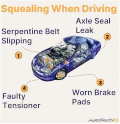
-
What is Preventative Maintenance and What Are The Benefits of it?

-
JobViewIQ - DVI Process Training - Part of the Auto Care Alliance Benefits

-
7 Signs of AC Pulley Issues
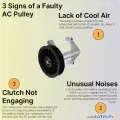
-
7 Signs of Clogged AC Components
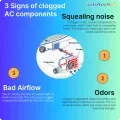
-
How Much Does a Transmission Fluid Change Cost?
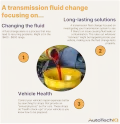
-
7 Signs of a Leaking Axle Seal
